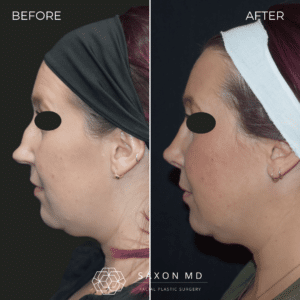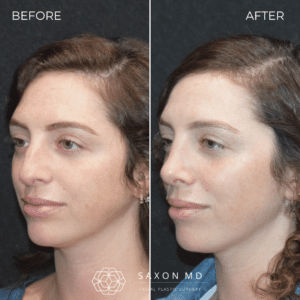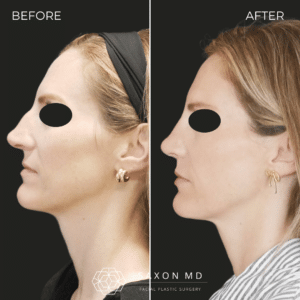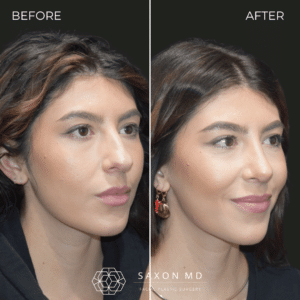Rhinoplasty Cost
Rhinoplasty, often referred to as a nose job, is one of the most sought-after cosmetic surgeries for individuals looking to enhance the appearance of their nose or correct functional issues like breathing problems. If you’ve been considering this procedure, one of your primary concerns is likely the rhinoplasty cost.
Understanding the various factors that influence the price of rhinoplasty is crucial when making an informed decision. This blog will provide a comprehensive guide to rhinoplasty costs in the United States and Texas in 2024.
What Is Rhinoplasty?
Rhinoplasty is a surgical procedure aimed at reshaping the nose. It can be performed for both cosmetic and functional reasons, such as improving the aesthetic appearance of the nose or addressing breathing issues caused by structural abnormalities. Rhinoplasty can correct concerns like a crooked nose, a prominent hump, or a bulbous tip, and it can also reduce or increase the size of the nose.

How Much Does Rhinoplasty Cost?
The cost of rhinoplasty varies significantly depending on a number of factors, including the surgeon’s experience, the geographic location of the practice, the complexity of the surgery, and whether the procedure is performed for cosmetic or medical reasons. In 2025, the average rhinoplasty cost in the United States ranges from $4,150 to $30,000.
Average Cosmetic Rhinoplasty Cost in the United States
Here is a breakdown of rhinoplasty costs in the U.S. based on different types of procedures:
Primary Rhinoplasty: The first time someone undergoes rhinoplasty is referred to as primary rhinoplasty. In 2025, the average cost of primary rhinoplasty in the United States is between $4,150 and $23,000.
Revision Rhinoplasty: Revision rhinoplasty is performed to correct or refine the results of a previous rhinoplasty. Since revision surgeries are more complex, the cost can be higher, typically ranging from $8,000 to $30,000.
Average Rhinoplasty Cost in Texas
In Texas, the cost of rhinoplasty in 2025 is generally on par with national averages but can vary depending on the city. Rhinoplasty costs in larger metropolitan areas like Dallas, Austin, and Houston may be slightly higher than in smaller towns or rural areas. Here’s a general overview of the cost breakdown in Texas:
- Primary Rhinoplasty in Texas: $6,000 – $10,000
- Revision Rhinoplasty in Texas: $8,000 – $15,000

Factors That Affect Rhinoplasty Cost
Several key factors contribute to the total cost of rhinoplasty. Understanding these factors can help you anticipate what to expect when discussing prices with your surgeon.
1. Surgeon’s Experience and Expertise
A surgeon’s skill, experience, and reputation play a significant role in determining the cost of rhinoplasty. Surgeons who specialize in facial plastic surgery or rhinoplasty and have a track record of successful outcomes often charge higher fees. However, paying more for an experienced surgeon is typically worth it to ensure a safe procedure and satisfying results.
2. Geographic Location
Location has a significant impact on the cost of rhinoplasty. In areas with a higher cost of living, such as major cities like New York or Los Angeles, rhinoplasty tends to be more expensive. In contrast, surgeries performed in smaller towns or less populated areas may be slightly less expensive.
3. Complexity of the Procedure
The complexity of your rhinoplasty procedure is another major factor in the overall cost. A simple cosmetic rhinoplasty may cost less than a complex revision surgery that involves reconstructing parts of the nose. Revision rhinoplasty and ethnic rhinoplasty, which require a higher level of skill and customization, are often more expensive.
4. Surgical Facility Fees
Rhinoplasty is typically performed in an accredited surgical facility, and the cost of using the operating room, anesthesia, and medical staff is included in the overall price. These fees can vary depending on whether the surgery is performed in a hospital or an outpatient surgery center. On average, facility fees range from $800 to $3,000.
5. Anesthesia Fees
Rhinoplasty is usually performed under general anesthesia, administered by an anesthesiologist or nurse anesthetist. The anesthesia fees range from $800 to $2,000, depending on the length of the surgery and the anesthetist’s fees.
6. Post-Surgery Care and Follow-up Visits
Most surgeons include post-operative care in the overall price of rhinoplasty, but you may have additional costs for medications, medical supplies, or follow-up visits if complications arise. The cost of post-surgery care can range from $200 to $500 depending on the patient’s needs.

Is Rhinoplasty Covered by Insurance?
Cosmetic rhinoplasty is generally not covered by health insurance because it is considered elective. However, if you are having rhinoplasty to correct a functional problem, such as a deviated septum or breathing difficulties, your insurance may cover part of the procedure. It’s important to check with your insurance provider beforehand to determine whether any portion of your rhinoplasty cost can be covered.
Pros and Cons of Choosing a Lower-Priced Surgeon
It may be tempting to choose a surgeon who offers rhinoplasty at a lower cost, but this decision can have both benefits and risks. Here are some things to consider:
Pros:
- Affordability: Lower-priced surgeons can make rhinoplasty more accessible to patients on a tight budget.
- Shorter Wait Times: Surgeons who charge less may have shorter wait times for consultations and surgery dates, which is appealing to those looking for quick results.
Cons:
- Less Experience: Surgeons who offer rhinoplasty at a significantly lower price may have less experience or fewer credentials, which can lead to less predictable outcomes.
- Risk of Revision Surgery: If the results of your rhinoplasty are unsatisfactory due to an inexperienced surgeon, you may need to undergo revision rhinoplasty, which can be more expensive and challenging than primary rhinoplasty.
- Potential Complications: Safety should always be a top priority when choosing a surgeon. Lower-priced surgeries may be performed in facilities that cut costs, potentially increasing the risk of complications.

Choosing the Right Surgeon for Your Rhinoplasty
When considering rhinoplasty, the surgeon you choose plays a crucial role in the success of your procedure. Here are some tips for selecting the right surgeon:
Board Certification: Ensure your surgeon is board-certified in facial plastic surgery or otolaryngology (ENT). These certifications demonstrate that the surgeon has completed specialized training in rhinoplasty and facial aesthetics.
Experience with Rhinoplasty: Ask your surgeon how many rhinoplasties they perform each year and if they specialize in revision rhinoplasty or ethnic rhinoplasty, depending on your needs.
Before and After Photos: Review the surgeon’s portfolio of before and after photos of previous patients to get a sense of their skills and aesthetic results.
Patient Reviews: Look at online reviews or ask for testimonials from past patients to gauge satisfaction with the surgeon’s work and bedside manner.
Consultation: Take the time to schedule consultations with a few different surgeons. During the consultation, ask about their experience, approach to the surgery, and pricing to find the best fit for you.
Final Thoughts on Rhinoplasty Cost
The cost of rhinoplasty can vary widely depending on the surgeon’s experience, location, and the complexity of the procedure. While it’s important to consider your budget, choosing a qualified and experienced surgeon is critical to achieving your desired results safely. Rhinoplasty is an investment not only in your appearance but also in your confidence, so it’s essential to make an informed decision that prioritizes quality care.
In 2025, the average rhinoplasty cost in the United States ranges from $6,000 to $15,000, with costs in Texas generally falling within that range. Be sure to factor in all associated costs, including anesthesia, surgical facility fees, and post-operative care, to get a comprehensive understanding of what you’ll need to budget for.
If you’re ready to take the next step in your rhinoplasty journey, consult with a board-certified facial plastic surgeon, like Dr. Sarah Saxon, to discuss your goals, budget, and treatment plan
You May Also Like: